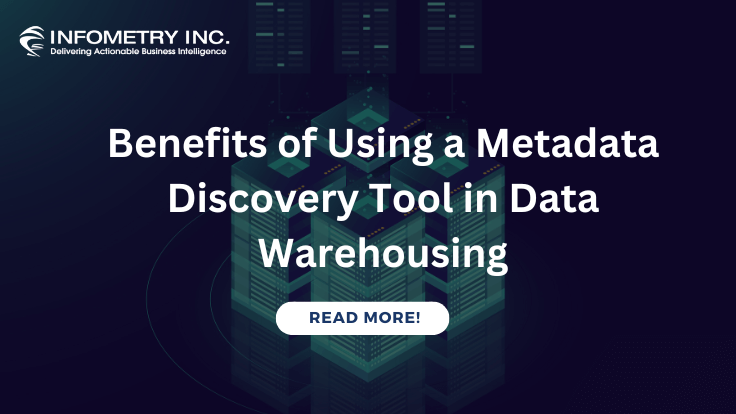
Why Should Customers Choose Snowflake In 2024?
December 27, 2023
A Detailed Beginner’s Guide to Power BI
January 3, 2024In the ever-evolving landscape of cloud data platforms, Snowflake has emerged as a game-changer, redefining the way organizations manage and leverage their data. Central to Snowflake’s innovative approach is its underlying database architecture, a pivotal component that sets the platform apart. In this blog, we delve into the intricacies of the database used in Snowflake and explore how it contributes to the platform’s unprecedented scalability, performance, and flexibility.
Understanding Snowflake’s Multi-Cluster, Shared Data Architecture:
At the core of Snowflake’s database is a multi-cluster, shared data architecture, which fundamentally distinguishes it from traditional databases. Unlike conventional databases that are often constrained by a single, monolithic database engine, Snowflake employs a unique separation of storage and compute resources.
1. Storage Layer: Immutable and Scalable:
Snowflake’s storage layer is built on a scalable, object-based storage system. Data is stored in immutable, compressed, and optimized micro-partitions, enhancing efficiency and minimizing storage costs. This separation of storage ensures that data can be ingested and stored without concerns about computing resources, providing unprecedented flexibility.
2. Compute Layer: Independent and Elastic:
The compute layer in Snowflake is comprised of independent virtual warehouses, each equipped with its own compute resources. These warehouses handle the processing tasks, such as querying and analysis, without directly interacting with the data storage. This separation allows computing resources to scale independently, ensuring optimal performance and eliminating resource contention.
3. Dynamic Scaling for Performance:
One of the key advantages of Snowflake’s architecture is its dynamic scaling capability. As data volumes and processing demands fluctuate, Snowflake automatically adjusts the number of compute resources allocated to a task. This dynamic scaling, coupled with the ability to scale compute resources up or down on the fly, ensures optimal performance during peak times without overprovisioning resources during periods of lower demand.
4. Shared Data Architecture for Collaboration:
The shared data architecture enables seamless collaboration and sharing among users within and across organizations. Different virtual warehouses can concurrently access and process the same dataset without conflicts, fostering a collaborative data environment.
5. Metadata Management and Global Data Access:
Snowflake’s metadata layer plays a crucial role in managing the distributed data across its architecture. The metadata layer tracks the location of data, schema information, and other critical details. With the introduction of the Snowflake Data Cloud, users gain global data access, allowing them to query and analyze data across different regions without compromising on performance.
6. Security and Compliance:
The database architecture in Snowflake places a strong emphasis on security. End-to-end encryption, granular access controls, and compliance with industry standards are embedded in the architecture to ensure the highest level of data protection.
Infometry’s Expertise in Leveraging Snowflake’s Architecture:
1. Tailored Configurations for Business Needs:
Infometry understands that every organization is unique. Therefore, their experts tailor Snowflake configurations to align with diverse business requirements, ensuring that the architecture optimally serves specific use cases and objectives.
2. Seamless Implementation and Integration:
Infometry’s end-to-end implementation support ensures a seamless integration of Snowflake into existing architectures. This hands-on approach minimizes disruptions and maximizes the benefits of Snowflake’s architecture for organizations.
3. Performance Optimization and Scalability:
By strategically configuring Snowflake’s architecture, Infometry ensures optimized performance and scalability. This approach enables organizations to handle growing data volumes effortlessly, making the architecture future-proof for evolving business needs.
4. Comprehensive Data Management:
Infometry’s expertise extends to comprehensive data management solutions. They leverage Snowflake’s architecture to organize, store, and analyze data efficiently, streamlining data management processes for enhanced productivity.
5. Continuous Innovation and Support:
Recognizing the dynamic nature of the data landscape, Infometry commits to continuous innovation. Their dedicated support teams are readily available to address concerns, provide assistance, and guide organizations through the evolving world of data analytics.
Conclusion:
Snowflake’s database architecture is a testament to the platform’s commitment to innovation and efficiency in the realm of cloud data management. The multi-cluster, shared data architecture, dynamic scaling capabilities, and its new Snowflake Native App Framework allow you to create data applications that leverage core Snowflake functionality. By understanding the nuanced features of Snowflake’s architecture and the strategic utilization by experts like Infometry, businesses can embark on a data journey that is scalable, collaborative, and secure. The collaboration between Snowflake Native App Framework and Infometry’s INFOFISCUS represents a convergence of innovative technology and expert implementation, ensuring organizations navigate the data landscape with confidence and excellence.




